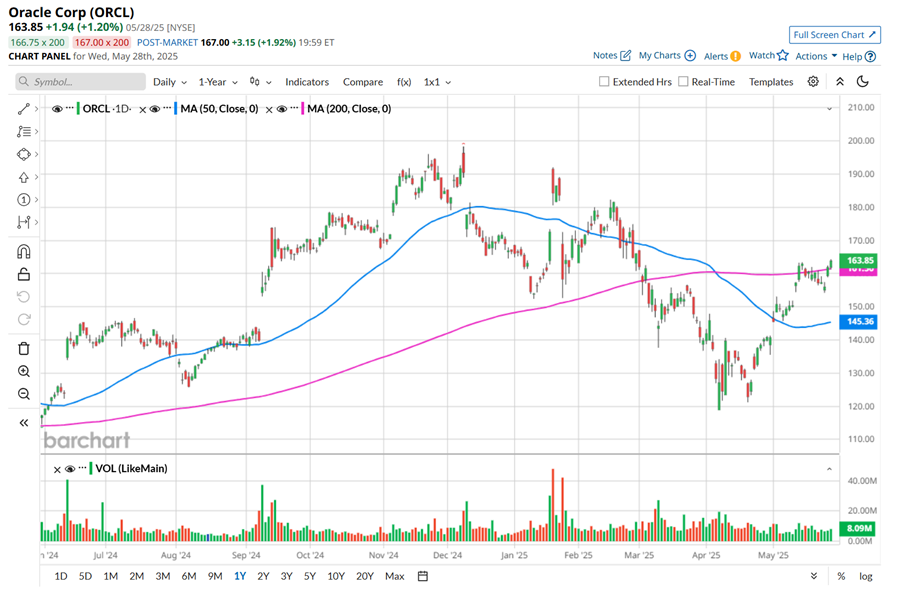|
||
|
Name
Cash Bids
Market Data
News
Ag Commentary
Weather
Resources
|
Is Oracle Stock Underperforming the S&P 500?/Oracle%20Corp_%20office%20logo-by%20Mesut%20Dogan%20via%20iStock.jpg)
Austin, Texas-based Oracle Corporation (ORCL) is a global technology company that offers products and services that address enterprise information technology environments. Valued at a market cap of $458.3 billion, the company offers a comprehensive suite of cloud applications, platform services, and engineered systems, and serves a wide range of industries, helping businesses manage data, run critical operations, and modernize their IT environments. Companies valued at $200 billion or more are typically classified as “mega-cap stocks,” and Oracle fits the label perfectly, with its market cap exceeding this threshold, underscoring its size, influence, and dominance within the software - infrastructure industry. The company’s core strengths lie in its deep expertise in enterprise software, robust cloud infrastructure, and long-standing relationships with global businesses. It is a market leader in database management systems, known for its reliable and scalable solutions that support mission-critical workloads. This computer software giant has slipped 17.4% from its 52-week high of $198.31, reached on Dec. 9, 2024. Moreover, it has declined 1.3% over the past three months, slightly lagging behind the broader S&P 500 Index’s ($SPX) 1.1% drop over the same time frame. 
Moreover, on a YTD basis, shares of ORCL are down 1.7%, underperforming SPX’s marginal uptick. Nonetheless, in the longer term, Oracle has surged 31.6% over the past 52 weeks, outpacing SPX’s 11% rise over the same time frame. To confirm its bullish trend, ORCL has been trading above its 200-day moving average recently, and has remained above its 50-day moving average since early May. 
On Mar. 10, Oracle delivered weaker-than-expected Q3 performance, prompting its share price to decline 3.1% in the following trading session. The company posted revenue of $14.1 billion, which grew 6.4% from the year-ago quarter but fell short of the consensus estimates by 1.6%. The shortfall was primarily due to lower cloud license and on-premise license revenue along with a decline in hardware and services revenue, which partially offset a 10.5% rise in its key cloud services and license support sales. Moreover, while its adjusted EPS improved 4.3% year-over-year, reaching $1.47, it missed Wall Street estimates by a penny. Nonetheless, looking ahead, Oracle projects a 15% revenue growth for the upcoming fiscal year, supported by a robust $130 billion sales backlog, reflecting a healthy pipeline and potential sustained growth. Additionally, it expects its Remaining Performance Obligation (RPO) to continue to grow rapidly, as it looks forward to signing its first Stargate contract, which could expand both its AI training and AI inferencing businesses in the near future. Oracle has outpaced its rival, Microsoft Corporation’s (MSFT) 6.3% increase over the past 52 weeks. However, it has lagged behind MSFT’s 8.5% returns on a YTD basis. Despite Oracle’s recent underperformance relative to the broader market, analysts remain moderately optimistic about its prospects. The stock has a consensus rating of “Moderate Buy” from the 35 analysts covering it, and the mean price target of $178.48 suggests an 8.9% premium to its current price levels. On the date of publication, Neharika Jain did not have (either directly or indirectly) positions in any of the securities mentioned in this article. All information and data in this article is solely for informational purposes. For more information please view the Barchart Disclosure Policy here. |
|
|